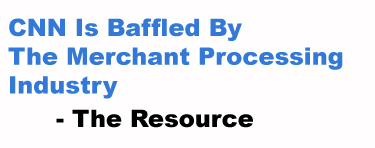Debit Cards
Wells Fargo, Chase, SunTrust Cancel Debit Rewards Program
August 23, 2011Originally Published on March 28, 2011.
And the damage continues:
“March 26, NEW YORK (CNNMoney) — Debit card rewards programs are vanishing at several major banks.
Wells Fargo said Friday that it will no longer offer its debit rewards program for new customers. This will go into effect March 27 at Wachovia and April 15 at Wells Fargo (WFC, Fortune 500), while existing customers will remain unaffected for the time being.
JPMorgan Chase (JPM, Fortune 500) notified existing customers last week that their debit rewards programs will disappear July 19. The bank eliminated debit rewards for new customers in February.“
See Our Articles on This Topic
Debit Interchange Fee Study Act – A Few Good Senators Try to Stop the Madness
Debit Card Costs May Be Put on The Consumer – Don’t Make Us Pay
Electronic Payments Industry Changing Forever – All Points Bulletin
-deBanked
Interchange Regulation and Reduction: Proof it will fail
August 23, 2011Originally Published on April 16, 2011.

As proponents and opponents debate debit card fee reform, few seem to be aware that interchange regulation has been
implemented before and the results were disastrous. In 2000, The Reserve Bank of Australia (RBA) published a 90 page report (A STUDY OF INTERCHANGE FEES AND ACCESS) that outlined their assessment on card payment interchange rates and the impact. It’s central thesis was this: “The study is concerned with the economic efficiency of these [payment] networks. Most importantly, are they delivering the best possible service at the lowest cost to end-users?”
Eerily similar to the U.S. Federal Reserve’s 2010 analysis, the RBA reached the following conclusion: “While a pricing system based on interchange fees still seems to be the most practical arrangement for the credit card network, the levels of interchange fees are high relative to costs and fees of this magnitude are not essential to the continued viability of this network.”
Bolstered by the findings, consumer activitsts groups pushed for regulation and by 2002, the RBA announced that 4 party payment networks such as those operated by Visa and MasterCard would need to make serious changes. Lobbyists groups fought to rally against regulation but came up short. In 2004, strict measures to limit costs became law and with that a series of unintended consequences.
The U.S. should examine the outcome in Australia, a country whose values and economic system is much like our own. 3 years before the Durbin Amendment came to pass, MasterCard did just that. In early 2007, it researched the impact and side effects of regulation in a report titled “Interchange Regulation: Lessons From the RBA Intervention in Australia.” We reviewed the rules that most closely resemble those of the Federal Reserve and have republished MasterCard’s findings below:
Regulatory Measure #1: Reduction of Interchange Costs
Intended Consequence #1: Merchant fees would be reduced, which would then be passed onto consumers, resulting in lower prices for all.
Actual Outcome: 70% of merchants did not realize that any changes had been implemented and thus did not make an effort to pass on savings to consumers. Annual reports actually showed that retailers pocketed the difference instead. This issue has been largely debated in the U.S., with many retailers openly stating that they would not pass on any savings. Proposed New Debit Card Rules May Not Help Consumers Much
Intended Consequence #2: Debit card usage expands while credit usage declines.
Actual Outcome: Debit card usage declined instead. This appears to be the same path the U.S. is on already as implementation of the law approaches. JP Morgan Chase, Bank of America and Citigroup Might Limit Debit Card Purchases
Regulatory Measure #2: Elimination of The “No Surcharge” Rule
Intended Consequence: Merchants would judiciously surcharge for accepting credit cards; and in so doing, make credit usage less attractive than debit usage; which would in turn encourage higher debit card usage.
Actual Outcome: Where surcharging actually occurred, it appeared to be mainly by brand, applied in a way that is not disclosed to consumers, and done mainly outside of retail markets. As of July 2010, the U.S. implemented a similar law under the Durbin Amendment that is already in effect. See an article we wrote on the subject back in December titled “Take Your Rewards Card and Get Out My Store!.”
The outcomes seem to answer questions that we in the U.S. are spending too much time debating. Regulation in Australia was a failure. “Contrary to the RBA’s intention of making the payments system more efficient and increasing competitive intensity, the exact opposite has happened in Australia. In addition, the payments system has actually become more expensive for the average cardholder. While there is no evidence of retail price reduction by the merchants (so confidently predicted by the RBA), there is widespread acknowlegement that issuers have actually increased fees to cardholders to compensate for lower interchange fees since the RBA regulation.”
Consumer rewards programs are already disappearing as reported by CBS News. “Banks to strip debit card rewards; What next?” This is the exact sequence of events that happened abroad. MasterCard addressed this in their report, but did not offer any hard statistics. “For the most issuers, the rewards programs have been downsized, and in some instances very substantially.”
Many believe the shortsighted push for reform has less to do with savings for retailers and consumers and more with to do with a desire for Americans to punish the banks for their role in the financial crisis. The banking industry employees millions of people so the harm intended for rich CEOs is more likely to affect the jobs of the middle class.
There is still hope. A few Senators have proposed the Debit Interchange Fee Study Act of 2011, which seeks to delay regulation for two years. This will allow the Federal Reserve to properly assess the goals they hope to achieve, come up with a better plan of action, and study the likely consequences.
While two years seems fair, we can’t help but point out the chain of events in Australia should be all the evidence we need. Ignorant disdain for the electronic payments industry is a major distraction from the real issues facing our country today. The unemployment rate, the national deficit, and the educational system all lose our full attention every time we quip about debit card fees.
Customers spend more when they pay with plastic. Consumers don’t need to carry bundles of cash in their pocket. Banks employ millions of workers. Everybody already wins. deBanked’s advice? Let’s move on to fix a different system that’s actually broken. We’ll all be better off.
– deBanked
Debit Card Fee Reform is Gaining Steam in Canada
August 23, 2011Originally published on April 18, 2011.
Emboldended by the looming implementation of debit card fee regulation in the U.S., Canadians seem to have entered the ring. According to TheSpec, “Canadian retailers are calling on Ottawa to regulate the credit and debit card industry, saying voluntary measures have failed to reduce their costs.”
Previous attempts to lower fees, such as the Voluntary Code of Conduct introduced by the Federal Finance Minister Jim Flaherty have failed to produce any changes. What they hoped to gain from a voluntary code, one can only wonder. However, it does provide the basic framework on which retailers will build their case. Read the below from the Financial Consumer Agency of Canada:
Code of Conduct for the Credit and Debit Card Industry in Canada
Purpose
The purpose of the Code is to demonstrate the industry’s commitment to:
- Ensuring that merchants are fully aware of the costs associated with accepting credit and debit card payments thereby allowing merchants to reasonably forecast their monthly costs related to accepting such payments.
- Providing merchants with increased pricing flexibility to encourage consumers to choose the lowest-cost payment option.
- Allowing merchants to freely choose which payment options they will accept.
Scope
The Code applies to credit and debit card networks, (referred to herein as payment card networks), and their participants (e.g. card issuers and acquirers1).
The payment card networks that choose to adopt the Code will abide by the policies outlined below and ensure compliance by their participants. The Code of Conduct will be incorporated, in its entirety, into the payment card networks’ contracts, governing rules and regulations.
The Code will apply within 90 days of being adopted by the card networks and their participants. Networks and acquirers will have up to nine months to implement Element 1. Issuers will have up to one year to re-issue cards already in circulation that contravene Element 6 or 7.
Requirements for Payment Card Networks
By adopting the Code, payment card networks agree to provide any requested information regarding actions taken by themselves or participants to the Financial Consumer Agency of Canada, for the purpose of monitoring compliance with the Code. In addition, payment card networks agree to pay for the fees associated with monitoring compliance with the Code, as determined by the Financial Consumer Agency of Canada.
Policy Elements
1. Increased Transparency and Disclosure by Payment Card Networks and Acquirers to Merchants
The payment card networks and their participants will work with merchants, either directly or through merchant associations, to ensure that merchant – acquirer agreements and monthly statements include a sufficient level of detail and are easy to understand. Payment card networks will make all applicable interchange rates easily available on their websites. In addition, payment card networks will post any upcoming changes to these fees once they have been provided to acquirers.
Payment card network rules will ensure that merchant statements include the following information:
- Effective merchant discount rate2 for each type of payment card from a payment card network;
- Interchange rates and, if applicable, all other rates charged to the merchants by the acquirer;
- The number and volume of transactions for each type of payment transaction;
- The total amount of fees applicable to each rate; and,
- Details of each fee and to which payment card network they relate.
This information must be presented in a manner that is clear, simple and not misleading.
2. Payment card network rules will ensure that merchants will receive a minimum of 90 days notice of any fee increases or the introduction of a new fee related to any credit or debit card transactions. Payment card networks will provide at least 90 days notice to acquirers for rate and / or fee changes and at least 180 days notice for structural changes3.
Notification is not required for fee changes made in accordance with pre-determined fee schedules, such as those based on merchant sales volume, provided that the schedules are included in the merchant’s contract.
3. Payment card network rules will ensure that following notification of a fee increase or the introduction of a new fee, merchants will be allowed to cancel their contracts without penalty.
By signing a contract with an acquirer, a merchant will have the right to cost certainty over the course of their contract. As a result, in the event of a fee increase or the introduction of a new fee, merchants will be allowed to opt out of their contracts, without facing any form of penalty, within 90 days of receiving notice of the fee increase or the introduction of a new fee.
Merchants may not cancel their contracts in relation to fee increases made in accordance with pre-determined fee schedules, such as those based on merchant sales volume, provided that the schedules are included in the merchant’s contract.
4. Payment card network rules will ensure that merchants who accept credit card payments from a particular network will not be obligated to accept debit card payments from that same payment card network, and vice versa.
Payment card networks will not require merchants to accept both credit and debit payments from their payment card network. A merchant can choose to accept only credit or debit payments from a network without having to accept both.
5. Payment card network rules will ensure that merchants will be allowed to provide discounts for different methods of payment (e.g. cash, debit card, credit card). Merchants will also be allowed to provide differential discounts among different payment card networks.
Discounts will be allowed for any payment method. As well, differential discounting will be permitted between payment card networks.
Any discounts must be clearly marked at the point-of-sale.
6. Competing domestic applications from different networks shall not be offered on the same debit card. However, non-competing complementary domestic applications from different networks may exist on the same debit card.
A debit card may contain multiple applications, such as PIN-based and contactless. A card may not have applications from more than one network to process each type of domestic transaction, such as point-of-sale, Internet, telephone, etc. This limitation does not apply to ABM or international transactions.
7. Payment card networks will ensure that co-badged debit cards are equally branded.
Payment card network rules shall ensure that the payment networks available on payment cards will be clearly indicated. Payment card networks will not include rules that require that issuers give preferential branding to their brand over others. To ensure equal branding, brand logos must be the same size, located on the same side of the card and both brand logos must be either in colour or black and white.
8. Payment card network rules will ensure that debit and credit card functions shall not co-reside on the same payment card.
Debit and credit cards have very distinct characteristics, such as providing access to a deposit account or a credit card account. These accounts have specific provisions and fees attached to them. Given the specific features associated with debit and credit cards, and their corresponding accounts, such cards shall be issued as separate payment cards. Consumer confusion would be minimized by not allowing debit and credit card functions to co-reside on the same payment card.
9. Payment card network rules will require that premium credit and debit cards may only be given to consumers who apply for or consent to such cards. In addition, premium payment cards shall only be given to a well-defined class of cardholders based on individual spending and/or income thresholds and not on the average of an issuer’s portfolio.
Premium payment cards have a higher than average interchange rate. They must be targeted at individuals who meet specific spending and/or income levels.
10. Payment card network rules will ensure that negative option acceptance is not allowed.
===================
If payment card networks introduce new products or services, merchants shall not be obligated to accept those new products or services. Merchants must provide their express consent to accept the new products or services.
1 “Acquirers” are entities that enable merchants to accept payments by credit or debit card, by providing merchants with access to a payment card network for the transmission or processing of payments.
2 The effective merchant discount rate is calculated as the total fees paid by the merchant to an acquirer, related to the processing of a specific type of payment card from a payment card network, divided by the total sales volume for that type of payment card.
3 Structural changes are significant changes to the fee structure for a payment card network. This includes the introduction of new types of interchange or other fees, a change to the interchange rate structure or the introduction of a new type of credit or debit card.
===================
There are many similarities with this and reports published in two other countries:
Australia: A Study of Interchange Fees and Access, Year 2000
United States: Debit Card Interchange Fees and Routing, Year 2010
As Canada copies their neighbor to the south to regulate electronic payments, we can’t help but shake our heads. This scenario played out in Australia back in 2004 and the outcome was very different than intended. Debit card costs rose as a result and savings were not passed along to consumers. There is proof that Interchange Regulation and Reduction Will Fail, as outlined in a recent article.
Americans and Canadians enjoy poking fun at eachother’s missteps. This time however, the jokes on both of us. Debit card fee reform will fail and we’ll all be worse off. What did we learn from Australia? Nothing mate.
– deBanked
The End of Debit Cards is Real
August 23, 2011
Debit card fee reform isn’t just a silly debate between businesses and banks. CBS News discusses how consumers will be impacted. Undecided or against this reform? read more and get involved at dontmakeuspay.org. Forceful, harmful regulation isn’t the only solution to lowering the cost of debit card payments.
We would love to hear your feedback!
– deBanked
Debit Card Reform to Be Finalized June 29th
August 23, 2011Posted on June 28, 2011 at 12:14 AM
The Federal Reserve is scheduled to finalize debit card reform on June 29th as dictated in the Durbin Amendment of the Wall Street Reform Act. The rough draft of the legislation that was issued back in December 2010 mandates a 12 cent cap on interchange fees. Interchange is the array of fees paid to the banks that issue the cards every time their cards are used.
Proof Interchange Reform Will Fail
There is some speculation that the Fed may raise the cap to an amount slightly higher than the original 12 cents. Ultimately, banks stand to lose billions of dollars over the next year since the law takes effect on July 21, 2011. We will update you on the outcome.

– deBanked
Blackjack! 21 Cent Debit Card Interchange Fee Plus 5 Basis Points
August 23, 2011Originally Published on June 30th, 2011.
After holding their breath for six months, card issuing banks finally exhaled today after the Federal Reserve announced the finalized debit interchange fees. The original proposed 12 cent cap was vehemently opposed, sparking an ugly battle that pitted large retail chains against banks. The end result?
A 21 cent interchange cap
BlackJack!

This is complemented by an additional 5 basis point variable charge that can be assessed to recover losses from fraud. Though nearly double the original proposal, card issuing banks still stand to lose billions in revenue. And as for the retailers? Well they’re not likely to experience any savings. It’s the law of unintended consequences, an outcome already proven by similar legislation in Australia. [Interchange Regulation and Reduction: Proof it Will Fail]
So billions may be lost but at 21 cents, it’s enough to turn a profit. That means we’re unlikely to witness the end of debit cards altogether, a scenario that reform opponents predicted (including us) would happen if a cap went into effect. But of course we can’t be sure. When the free markets are regulated with price controls, things start to get funky.
The original July 21st implementation deadline has been pushed back to October 1st to allow banks and acquirers to prepare for the change. It’s fair considering the actual regulations and rules are outlined in a lengthy 307 page snoozer of a document.
But while we’re taking our time to fully digest the final law, keep this in mind:
A retailer is not going to be paying 21 cents a transaction at the point of sale. Rather that’s the maximum a credit card processor/acquirer can pay to the card issuing banks.
So the retailer may be in a contract with their processor to pay 1% per debit card transaction. A customer purchases a $100 item with their Bank of America Visa Debit Card. $1 (which is 1% of $100) is charged to the retailer. Only 21 cents of that can be paid to Bank of America (the card issuing beneficiary of interchange fees). The rest is retained by the processor.
So the card issuing bank is limited, and to some degree the payment network such as Visa as well, but the other parties do not appear to be affected, including the ultimate cost that retailers will pay. Doh! And that my friends, is what all the intense fighting has been about since December 28th, 2010.
We’ll keep you updated.
– deBanked
Image by http://www.123rf.com
CNN Distorts Facts with Merchant Processing Statements
August 23, 2011
CNN ran an article today (Business Owners Baffled By Financial Statements) that supposedly exposes the crafty credit card industry. While there can always be improvements in transparency, Catherine Clifford not only misses the mark, she speaks authoritatively on a topic that she does not understand. This is upsetting considering she consulted with experts in her research. (Tim Chen, CEO of Nerd Wallet and Phil Hinke, President of MerchantFeeSavers)

Here’s a few errors we’d like to point out:
“Mom and pop stores do not deal directly with credit card giants, such as Visa (V, Fortune 500) and Mastercard (MA, Fortune 500). Instead, they have to work with third-party processors — known as merchant account providers or acquirers.” – Those poor victim Mom and Pop stores! But it’s not just Mom and pop stores that don’t get to work directly with Visa or MasterCard, NO retailer deals with them. Visa and MasterCard operate payment networks, not card processors. It is the role of credit card processors and acquiring banks to deal with retailers, regardless of their size. Catherine, here’s a simple diagram that can better explain it.
“And to make matters worse, every credit card has a different fee structure. Every credit card brand — such as Standard MasterCard, Gold MasterCard, Premium MasterCard, World Elite MasterCard — has its own fee structure. That means there are at least 400 different combinations of charges.” – Only businesses using an Interchange Plus pricing model are billed according to the 400+ cost categories. For those using tiered systems, which is the VAST MAJORITY of mom and pop stores, there are only 3 or 4 rate categories. These categories are extremely easy to understand and compare against competitors using similar pricing. See more on this in our simple guide: Intechange Vs. 3 Tier.
“For example, the bottom of the statement shown above, says: “Effective June 2011, MasterCard is introducing a new fee.” What it doesn’t say is what the fee is for or how much it is.” – MasterCard is a payment network and the fee they charge is roughly 11 basis points. On $100 in sales, that translates to 11 cents, a near immaterial amount. The payment network fee is normally only applied to businesses using the Interchange Plus pricing model. While we believe the omission of the increase is either a mistake or a deliberate alteration to make news, considering how small the fee already is, any increase is likely to go unnoticed.
“We are business owners. We are working. We are taking care of the customers,” said Mike Craighill, who owns two restaurants called Soup and Such in Billings, Mont., with his wife, Antonia. “I don’t have time to spend looking over every single line of the credit card statement.” – We don’t want to slam Soup and Such but their response is particularly ignorant. Just because you can make soup, doesn’t mean you can run a restaurant. Running a business means taking time to go through the financial statements and paperwork. Whether you do it yourself or hire a bookkeeper is your choice, but to complain that you can’t be bothered by looking at a statement once a month is bad business sense. You can’t make the case for transparency while admitting you are too busy serving soup to care anyway.
“That’s why for some business owners, cash only may be the best way to go.” – The worst conclusion ever. To point out that some business owners have trouble understanding their monthly statements and therefore should only use cash speaks volumes about Ms. Clifford, who clearly didn’t care about making a cohesive argument. It’s a shame that millions of people will read the article loaded with errors with the clear endorsement of CNN.
I guess it’s all about spitting out content in the name of web traffic and advertising. It’s articles like this that spring anti-bank lobbying groups into action to fight against something they don’t understand. That’s how we ended up with debit card reform. The whole 21 cent debit cap fee that just went into effect? Hailed as a victory for retailers, it does nothing to change the price of a debit card transaction at the point of sale. Instead it limits how much of the revenue the acquiring bank can split with the issuing bank. Wait, huh?. Yeah… good work.
Next time Catherine, have the expert write the whole article for you or just don’t bother writing it at all.
– deBanked
And the Misinformation Continues
August 23, 2011Originally published on July 12, 2011.
According to an article in BusinessWeek, Jennifer Cavallaro of Bristol, Rhode Island spent the last year lobbying for debit card interchange fee reform. As a restaurant owner, the cost of accepting a debit card was too high so she rallied to lower the cost the banks were allowed to charge her, or so she thought.
Or so BusinessWeek thinks…
Or so almost everyone thinks…
The Federal Reserve did in fact sign a debit interchange fee cap of 21 cents and 5 basis points into law. But this law has NO EFFECT or IMPENDING IMPACT on the cost a business is charged for accepting a debit card.
HUH?!
There are the three key parties involved in a debit card transaction:
1. The Customer’s Bank (The bank such as Bank of America, Wells Fargo, or whatever bank issued the debit card to the customer)
2. The Acquiring Bank (The bank the business is signed up with to accept debit cards through. It may be a large bank or independent merchant processor)
3. The Payment Network (Visa, MasterCard, PULSE, STAR, NYCE etc.)
An “interchange fee” is the money the Acquiring Bank pays to the Customer’s bank to help cover their costs. Essentially if a business is being charged 44 cents for accepting a $5 debit card sale. That 44 cents is collected by the Acquiring Bank and then shared with the Payment Network and Customer’s Bank.
Today that same merchant could be charged 44 cents or more for that $5 sale. The only difference is that the Acquiring Bank is only allowed to share a maximum of 21 cents and 5 basis points with the Customer’s Bank. Banks that issue debit cards will see a large decline in revenue, but everything may stay the same for all the other parties involved, including the businesses themselves.
Not only did retailers fail to win this fight, but they weren’t even a part of this legislation in any way. The law just caps what one bank is allowed to pay another bank. Nothing about businesses or cost at the point of sale. The world will go forward, but not with lower debit card fees for anyone.

Someone should tell BusinessWeeek that almost all of their facts and reporting are wrong.
- “Both merchants and banks balk at a Federal Reserve compromise on fees that businesses pay financial institutions” WRONG
- the Fed issued its final ruling: a cap of 21¢ per transaction. WRONG
- “Although she says the new rule will roughly halve her debit-card expenses, she feels they’ll still be too high.” JUST PLAIN SAD SINCE HER FEES HAVE NOT HALVED OR CHANGED AT ALL.
– deBanked






























